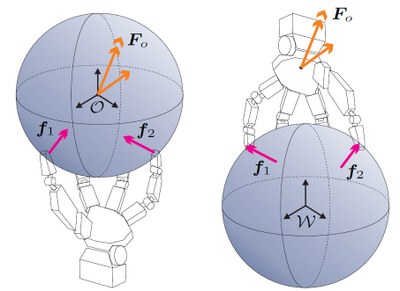Leg-based Locomotion
Legged locomotion seems to be a promising, versatile approach for robot mobility in various environments. Compared to wheel based systems, they offer a great variability of posture, allowing to navigate within tight spaces, to handle steep slopes and to step over obstacles. Requiring only small, discrete patches of support, legged systems are able to traverse rough and broken terrain. Depending on the environment, the robotic application and the requirements for speed and stability, two-, four- and six-legged configurations each offer their own advantages and also pose different challenges to the control engineer.
Currently, at the Institute of Robotics and Mechatronics research is conducted on two- and six-legged walking robots that are based on the technology of the DLR Lightweight Robot and the DLR Hand II. So far, the research concentrates on the mechanical design as well as posture and gait control algorithms, but also extends to higher level navigation and planning.


